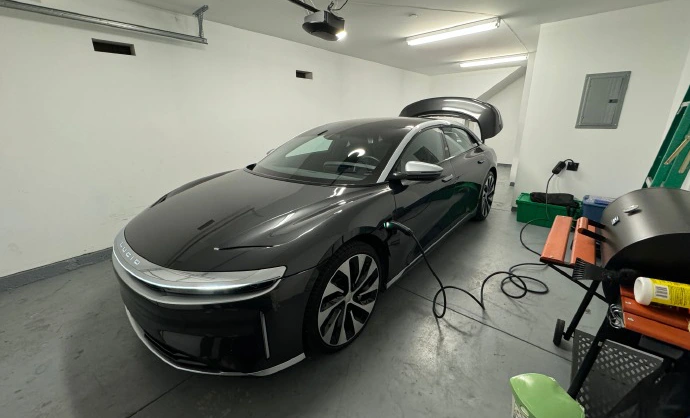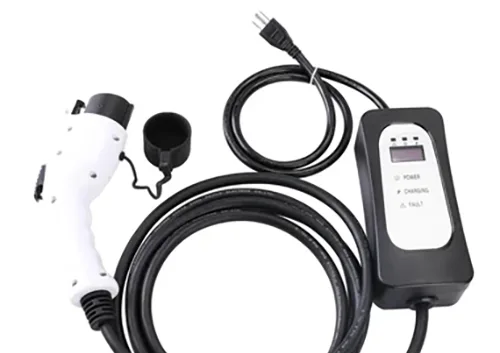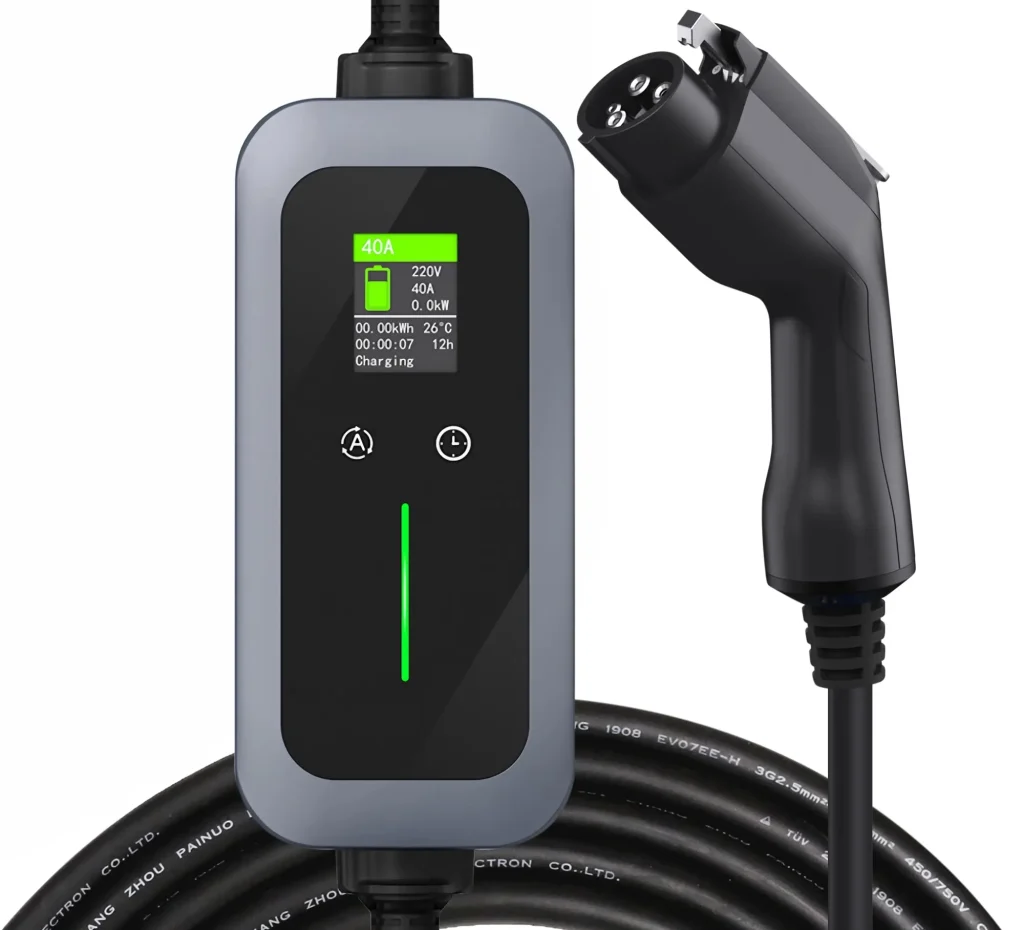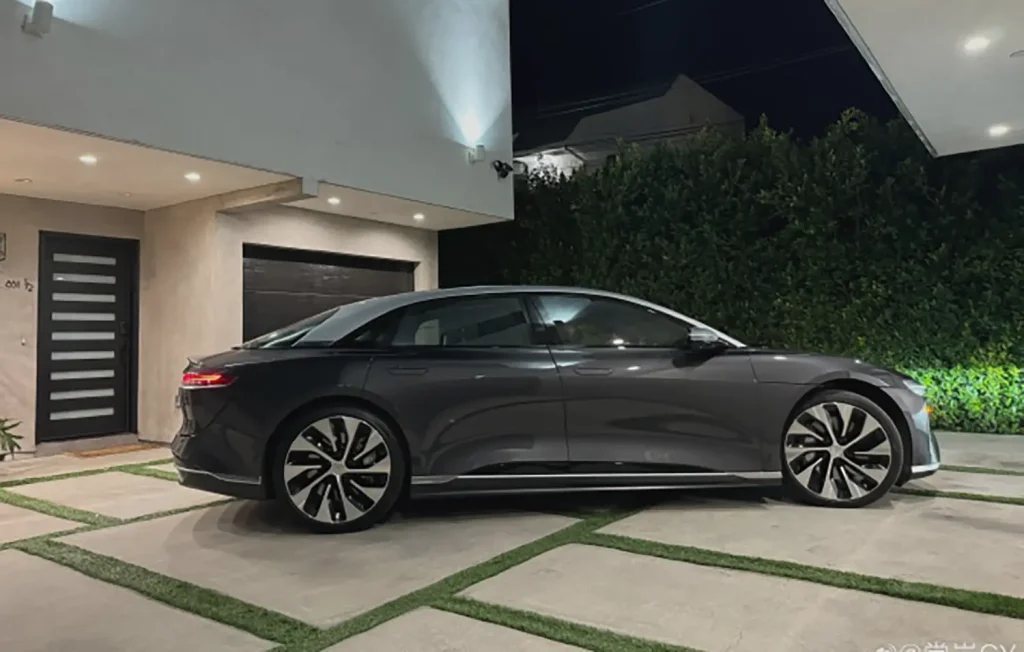
Electric vehicles are no longer something out of a sci-fi movie—they’re here, and they’re growing fast. In fact, according to Experian, 9.2% of all new car registrations in the U.S. are electric.
Speaking of which, if you’ve recently bought an EV—or are thinking of buying one—you’ve probably also started wondering about charging. And frankly, many people assume it’s as simple as filling up a conventional car at a gas station. That’s partly true, but there’s a lot more to it: plug types, charging speeds, compatibility—and on top of everything, whether the station is even working.

Over the years we’ve seen EV infrastructure has certainly improved, however, it’s still relatively new compared to fuel stations. Because of that, plenty of EV drivers have faced frustrating situations—like, running low on charge only to find the nearest public station out of service. What do you do then?
Considering such scenarios, Portable EV Chargers are becoming extremely popular. In fact, a must-have accessory for every EV driver. And why not? They’re compact, easy to carry, and can plug into different outlets—your reliable backup when you need it most.
But here’s the catch: with so many options out there, which one should you buy? And the most common question of all—should you go for Level 1 or Level 2 portable ev charger?
That’s exactly what we’re going to address in this article. If you’re new to EVs, we’d suggest reading through to the end so you don’t miss a thing.
So without further ado, let’s get straight into it…
What is a Level 1 Portable EV Charger?

A Level 1 charger is the most basic charging option available. It runs on a standard 120-volt household outlet (most popularly Nema 5-15)—the very same outlet you use for everyday appliances like a coffee maker or a laptop. In layman’s terms, it’s the slow-and-steady option.
On average, a Level 1 portable EV charger adds about 3 to 5 miles of range per hour of charging. If your vehicle’s battery is fully depleted, you could be looking at a charging time that extends overnight, sometimes even longer. For plug-in hybrid vehicles with smaller batteries, this may be perfectly fine, but for full EVs, it can feel limiting.
Pros of Level 1 chargers:
- Easy-peasy — no special wiring needed.
- Typically included with the purchase of your EV.
- Affordable and widely compatible.
Cons of Level 1 chargers:
- Very slow charging speeds.
- Not ideal for long daily commutes.
- Can be inconvenient if you need quick turnarounds.
If your driving needs are modest. Say, 20 – 30 miles per day, a Level 1 charger can serve you well.
For more versatile options, you can always browse Duevolt’s Portable EV Charger collection.
What is a Level 2 Portable EV Charger?

Level 2 chargers represent the next step-up in charging performance, offering higher-rate AC charging through 240V (in residential applications) or 208V (in commercial applications) electrical service.
As per Level 2 Portable EV Charger, Instead of plugging into a standard 120V outlet, they require a 240V outlet, the kind used for large appliances like dryers or ovens. With this added power, they can provide 20 to 30 miles of range per hour of charging, which makes them much faster than Level 1 chargers.This difference is substantial. Instead of waiting overnight for a full charge, you could regain most of your battery literally in just a few hours.
Pros of Level 2 Portable EV Charger:
- Up to 6–7 times faster than Level 1 chargers.
- Perfect for daily commuting or road trips.
- Compatible with most EVs on the market.
Cons of Level 2 Portable EV Charger:
- Requires access to a 240V outlet.
- Higher upfront cost compared to Level 1.
Portable Level 2 chargers, however, strike a balance between convenience and performance. You can use them at home or take them with you on the road for flexible charging.
For a deeper breakdown of how they work, check out our Portable EV Charger: The Complete Buyer’s Guide.
Level 1 vs Level 2: A Head-to-Head Comparison

Now that we’ve defined both, let’s compare them side by side:
- Charging Speed
- Level 1: 3–5 miles of range per hour.
- Level 2: 20–30 miles of range per hour.
- Convenience
- Level 1: Works with any household outlet, but very slow.
- Level 2: Requires a 240V outlet, however, recharges much faster.
- Cost
- Level 1: Usually included with EV purchase, minimal setup.
- Level 2: Higher cost, but saves time and may reduce electricity bills if used with off-peak charging.
- Portability
- Both can be portable, but Level 2 options provide greater flexibility for road trips or multiple vehicles.
To get straight to the point, Level 1 is fine for light users, whilst Level 2 is the most practical choice for most EV drivers.
Which Portable EV Charger is Right for You?

The best charger for you depends on your lifestyle, driving habits, and above all if your car support it:
- Level 1 Portable EV Charger makes sense if:
- You’re a plug-in hybrid owner.
- Your daily commute is short (under 30 miles).
- You prefer minimal investment and don’t mind overnight charging.
- Level 2 Portable EV Charger is better if:
- You own a full EV and rely on it daily.
-You drive long distances or frequently need quick recharges. - You want the flexibility of charging both at home and on the road.
- You’d like to take advantage of off-peak electricity rates.
So, where does that leave us? What if we say, you don’t actually have to choose one or the other. Yes! With Duevolt that’s possible. Our portable chargers are adjustable, meaning you can switch between Level 1 and Level 2 charging with a single purchase. That way, you get flexibility for any situation—without the hassle of buying two separate chargers.
On a final note, we hope this comparison has made the differences between Level 1 and Level 2 chargers clearer.
If you’re ready to make the jump to faster, smarter charging, head over to our Portable EV Charger page to explore the best options for your EV.
